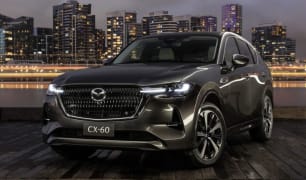Tesla’s original game plan was to focus on software updates to keep its cars fresh and appealing, rather than the traditional facelifts and specification tweaks that other car companies use. But, in what should probably not be a surprise, it turns out the rest of the car industry hasn’t been doing mid-cycle facelifts and updates for every other car for no reason - it did them because they worked.
To that end, this ‘new’ Model Y isn’t all-new, but rather the existing platform with refreshed styling. It takes Tesla’s latest design cues taken from the Cybertruck and Cybercab concept, with a new-look front end that is dominated by this LED lighting that runs across the entire width and wraps around the corners into the headlights.
There’s a new, flatter bumper, which takes styling inspiration from the Cybertruck but the company claims it’s also more aerodynamic. While at the rear there’s been an equally extensive redesign, with new lighting and tailgate. Tesla claims the new rear light bar that runs the width of the car is one of the longest of its kind in the industry.
I’ll leave it to each individual reader to decide whether they like the look of the 2025 Model Y, but objectively speaking it certainly looks different enough from its predecessor that it could entice existing owners to upgrade or attract new buyers.
Inside the changes are less noticeable, with some subtle but significant tweaks. Visually the biggest change is a new wrap-around ambient light strip that runs from door to door across the front of the dashboard.
But the rest of the layout is largely what was there before, with one notable exception. Tesla has taken its ‘minimalist’ design to the next level and removed the gear selector stalk on the right-hand side of the steering column. Instead you need to use the central touchscreen to get the Model Y moving.
To be candid, I don’t like this, it makes for a less convenient, less tactile and less initiative way to change gears, while also making the central screen even busier. Aesthetically, with the left-hand indicator stalk still there, it makes an asymmetrical design element in an otherwise symmetrical cabin. Which is where it starts to feel less like a design choice and more like a cost saving decision.
In fact, despite the good quality materials used throughout the cabin and good build quality, personally I find this almost-buttonless, so-called minimalist cabin just looks and feels cheap with so little in the way of details and design flourishes. Especially against the wave of incoming similar-sized and sometimes cheaper Chinese electric SUV rivals, that either look very similar (Deepal S07) or have similar technology and add some more design flair (BYD Sealion 7).
One design element of note is the lack of any Tesla badging on the front. There’s no ‘Tesla’ or even a ‘T’ badge, which is in keeping with the Cybertruck design but is another meaningful change from the previous Model Y.




































.png)




















